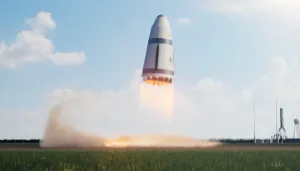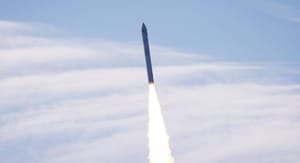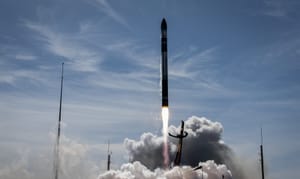
Oct 18, 2023
Stoke Expands their Ambitions!
Stoke Space, the company behind Hopper2 and the creators of the Nova rocket, has unveiled more about their future plans to expand into the expanding medium-lift market. Included in their plans are ambitious orbital refueling, interplanetary landings, and an even more ambitious smallsat launcher that will undoubtedly dominate the market.
What's New?
The most important innovation Stoke introduced was their plans for advanced orbital refueling. In this image depicted here, Stoke is planning on making a specific fuel-tanker upper stage, meaning they need to develop several important things.

With this new capability, Stoke has begun advertising new and exciting capabilities- greatly expanded payload limits, orbital debris management, on-orbit relocation of satellites, and even landing on other planets.

What does Stoke need to develop?
Stoke will need to design, test, and verify a docking system. This will be one of the first privately developed rendezvous and docking systems - to date, no company has developed one outside of the COTS (Commercial Orbital Transportation Services) and CRS (Commercial Resupply Program) programs that NASA has developed to service the International Space Station.

A docking system is complicated, especially for one that will transfer propellants. One of the greatest challenges with this is ensuring that the transfer system for liquid hydrogen will be capable of forming a molecularly perfect seal to ensure the very small liquid hydrogen does not leak. Liquid Hydrogen leaks are dangerous - the gas is incredibly reactive, and any LH2 getting into places it should not result in instantaneous explosions.
Stoke's next challenge will be creating a system to manage the boiloff of liquid hydrogen. Stoke is advertising new destinations, even showing that their upper stage will be capable of off-planet landings, with Stoke particularly advertising their heat shield's ability to handle the sharpness of lunar regolith due to its rugged construction. Despite this, they need to ensure they have enough fuel to land. While this may seem simple on the surface, liquid hydrogen vaporizes in space due to its boiling point being so low. In order to keep the fuel in its liquid form, they need to mitigate boiloff by developing a ZBO (Zero-Boiloff) solution.
Zero-boiloff is a challenging problem that has not been solved yet. Many approaches exist - ULA (United Launch Alliance) is pursuing a system of internal combustion engines to cool the hydrogen, while Lockheed Martin and Blue Origin are pursuing radiators.


Despite these ongoing efforts, Stoke has not divulged any details of their ZBO system other than its existence. One thing is for sure, though - Stoke's expanded capabilities will allow them to dominate the existing market and will prepare them well for the markets of tomorrow.



